Tag: Workouts
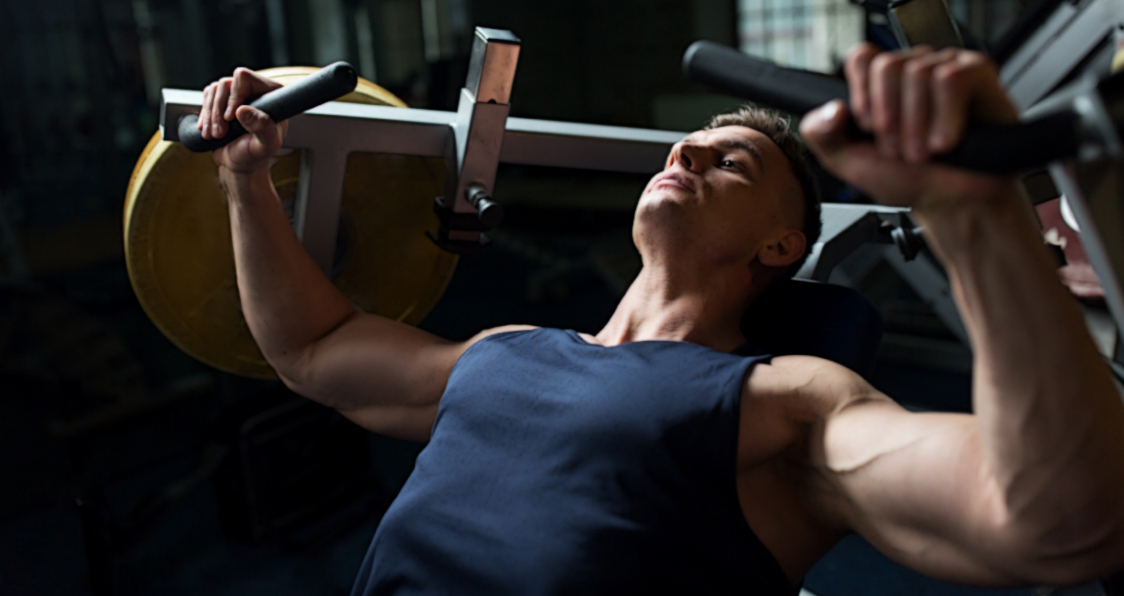
Powerful Chest Building Exercises
The Key To Chest Developing
Chest development is so often high on the priority list for many bodybuilders, powerlifters and gym regulars. There are a number of exercises that we can perform to place significant demand on the muscles of the chest and increase muscular size and strength. In order to develop the chest to its full potential, we must think about incorporating a number of chest strengthening exercises which place an adequate tensity on all muscles of the chest.
The pectorals are the muscle group of the chest which consists of 4 individual muscles that drive and control movement around the shoulder. The two major pectoral muscles are the pectoralis major and the pectoralis minor. The pec major muscle originates from the sternum (front of the ribcage) and clavicle (collarbone) and inserts directly on the humerus of the upper arm. The role of the pec major is to cause flexion, extension and rotation of the humerus (1). The pec minor, meanwhile, lies beneath the pec major, originates from the ribs and inserts on the scapula (shoulder blade). The pec minors role is different from it’s bigger brother as it works to stabilize the scapula.
There are two small muscles of the pecs which are often overlooked – the subclavius and the serratus anterior. As the name suggests, the subclavius can be found underneath the clavicle where it’s role is to depress or “pull” the clavicle down. The serratus anterior originates from the ribs and inserts on the scapula which allows it to pull the shoulder blade forward and around the side of the body.
If we are looking to add mass to the chest, the primary emphasis should be on exercises that challenge the pectoral major – considering it is the biggest muscle of the 4 and therefore has the greatest growth potential. With that being said, if we are looking for comprehensive chest development it’s important to select exercises which target the smaller pectoral muscles too.
The following exercises have been selected simply because they are supreme mass building exercises. However, a further reason for their inclusion is that they all effectively place a high demand on all 4 muscles of the pectorals and contribute to overall chest growth.
The Best Mass Building Chest Exercises
By reading through these 10 chest building exercises, you may quickly notice some similarities and trends. Many of the exercises do replicate the same or similar movement patterns. However, we will use different equipment or a change in the angle of application (i.e adding an incline) to effectively load the pectorals.
You will also find that the vast majority of the exercises are compound or “multi-joint” exercises. Since the goal is mass orientated, it would be appropriate to perform a number of compound lifts considering the substantial impact they have on the body (2). There are a couple of useful isolation or “single-joint” exercises listed, however, their purpose is to facilitate improvement with the compound exercises and iron out any weaknesses.
As stated, a wide range of equipment is utilized – machines, cables, dumbbells, barbells, and body weight. Each piece of equipment will provide a slightly different challenge and training stimulus for the pectorals.
1. Barbell Bench Press
The undisputed king of chest building exercises for a number of reasons. With free weight exercises, you will find that you can lift the heaviest loads when using the barbell, therefore, you can reasonably expect to lift a substantial weight with the barbell bench press. By lifting heavy, we increase the amount of mechanical load that the muscles are exposed to which will drive muscular hypertrophy (growth).
To execute the bench press, lie back on the bench and align your eyes with the barbell. Keeping feet flat on the floor, bring them under the hips to create a slight arch in the lower back. Grip the bar slightly wider than shoulder width to place maximal demand on the pecs. Having a narrower grip will involve the triceps more heavily, taking some demand away from the pecs. Drive hard through the heels and brace the core muscles before removing the bar from the rack and bringing it over the chest. Drop the bar down until it makes contact with the chest and then drive upward to return to the starting position. It is essential to ensure that the elbows are slightly down from the line of the shoulders throughout the duration of the movement. This is done to reduce any risk of shoulder impingement or injury.
If you are new to bench pressing, always start light and practice form first. As you become more competent you can gradually begin to increase the load lifted. Regardless of your experience in lifting, always prioritize safety when benching with the barbell. This means, setting up the rack appropriately to catch the bar in the case of failure or using a spotter to prevent becoming trapped under the bar.
2. Incline Barbell Bench Press
The flat bench press places the body in a position that is parallel with the floor. With the incline bench press, this angle is altered so that the body is placed at incline angle (typically anywhere between 15° and 50°. The purpose of this is to shift the demand to the upper portion of the pectoralis major however, be aware that if the angle is too steep, we will begin to involve the deltoids (shoulders) to a greater extent rather than the pecs (3). Therefore, it would be wise to keep the bench at a low angle in order to hit the upper chest most effectively.
The form for the incline press is identical to the flat press with the only difference between the two being the bench angle. However, don’t expect to bench the same kind of weight with the incline press as you do with the flat press. Because we are utilizing =the upper portion of the pec rather the entirety of the the muscle, you will find the incline press to be more challenging than a flat press.
The standard approach to “chest day”, is often to perform flat bench first before moving onto incline press later in the session. The problem with this approach is that you approach the incline press already in a fatigue state and therefore cannot lift as heavy as you could if you were fresh. With this in mind, I would recommend alternating the variation you start with on a regular basis so that you can perform at an optimal level for both exercises.
3. Dumbbell Bench Press
The dumbbell bench press is an excellent variation of the barbell version. While you will be capable of driving heavier loads with the barbell, there may come a time where you hit a plateau with your benching. At this point, it may be a good idea to switch to the dumbbell bench press which will provide a slightly different stimulus to the pectorals and recommence progress (4).
One of the biggest benefits to dumbbells is the fact that both sides have to work independently which challenges joint stability to large degree. As a result of this instability, a number of stabilizing muscles are recruited in order to control the movement. A further advantage with the dumbbell press is the fact that range of motion is increased. With the barbell press, as soon as the bar touches the chest you must drive back up – there is no physical way to drop any further. With the dumbbells, there is no restriction to stop you from dropping the weights down to the side of the body thus increasing the distance the weight travels and engaging the muscle to an even greater extent.
Finally, the dumbbell bench press may be a good option for beginners or those who are concerned about heavy barbell benching. With the dumbbell press, there is no concern about getting trapped under the bar or failing, as there is with the barbell variation. If you were to reach muscular failure with the dumbbells, you can simply drop them to the floor – no spotter or rack required.
4. Incline Dumbbell Press
As with the barbell press, the dumbbell press can also be completed on an incline bench. Feel free to play around with the angle of the bench which will allow you to target the muscle from a variety of angles and lead to a more comprehensive development.
One variation that can performed with dumbbells that cannot be before with barbells, is the usage of rotation. With a fixed bar, it is impossible to rotate through the shoulder, however, the individual dumbbells allow for a medial rotation of the humerus which causes considerable activation in the pectoralis major.
5. Incline Dumbbell Pullover
The dumbbell pullover is not only an impressive pec developer, but it actually activates a vast number of upper body muscles – including the lats and the delts. The intention with the pullover is to extend maximally through the shoulders, over the top of the head all while maintaining straight arms. This motion demands a great deal of stabilization, control and drive from the pectorals.
To complete the pullover, set a bench up with a slight incline, lie down, start with the dumbbell above the chest and gradually drop the dumbbell over the top of the head without bending at the elbows before returning to the starting position. Remember, this is a single-joint exercise which should be treated as accessory work and therefore be performed towards the end of your session.
6. Machine Chest Press
The primary benefit of using the chest press machine is the fact that the machine requires no stabilization work from the muscles. Because it is a machine, the handles only move in a fixed range, negating the need for muscular stabilization. This, in turn, removes demand from stabilizing musculature, places it all on the pecs and therefore may enhance hypertrophy. If you are looking to gain mass, it would be wise to complete sets on the machine chest press at the end of the session.
7. Machine Decline Press
The machine decline press is another machine based exercise that will hit the pecs from a different angle. The back support is slightly angled backward which places your upper body in a decline position. In the same way in which the incline targets the upper pecs, the decline will hit the lower portion of the pecs.
8. Machine Pec Deck
As with all machine-based exercise, the primary benefit of the pec deck is the fact that it will only follow one path removing the need for muscular stabilization. The machine starts with the handles out to the side of the body. Grasping the handles with straight arms, the pecs must powerfully contract and drive the arms together until they are approximately in line with the shoulders. Despite the different movement patterns, studies have suggested similar muscular activation of the pectorals with both the bench press and pec deck (5).
9. Incline Cable Fly
The incline cable fly is the next stage up from the pec deck machine. Simply, the chest fly is one of best single-joint exercises for isolating the muscles of the chest. The benefits of using cables for the fly is the fact that, unlike with free weights, the cable maintains tension on the pectorals throughout the entirety of the movement which will apply a large amount of stress to the muscle and enhance muscle growth.
10. Chest Dips
The only bodyweight exercise that makes the cut is the chest dip. This can be performed grounded or suspended; having the feet on the ground simplifies the exercise while holding the entire body of the floor presents a greater challenge. In order to target the chest, ensure you go with a wide grip as a narrow grip will place too much stress on the triceps rather than the pecs. The idea is to flex at the elbow and drop the body down towards the floor until the upper arm is parallel with floor. From there, the pecs and triceps must powerfully contract to drive the body back up to the starting position.
Final Word
Understandably, it will be challenging, if not impossible, to program in all 10 exercises into your training. Instead, adopt a small number of these exercises, integrate them into your strength program and be consistent with your training to bring about significant changes in chest size and strength.
For more news and updates, follow Generation Iron on Facebook, Twitter, and Instagram.
References:
1- Solari, Francesca; Burns, Bracken (2019), “Anatomy, Thorax, Pectoralis Major Major”, StatPearls, StatPearls Publishing, PMID 30252247,
2-Paoli, Antonio; Gentil, Paulo; Moro, Tatiana; Marcolin, Giuseppe; Bianco, Antonino (December 22, 2017). “Resistance Training with Single vs. Multi-joint Exercises at Equal Total Load Volume: Effects on Body Composition, Cardiorespiratory Fitness, and Muscle Strength”. Frontiers in Physiology. 8. doi:10.3389/fphys.2017.01105. ISSN 1664-042X. PMC PMCPMC5744434. PMID 29312007.
3-Travi, Alexandre. “Effects of Variations of the Bench Press Exercise on the EMG Activity of Five Shoulder Muscles”.
4-Welsch, Elizabeth A.; Bird, Michael; Mayhew, Jerry L. (2005-5). “Electromyographic activity of the pectoralis major and anterior deltoid muscles during three upper-body lifts”. Journal of Strength and Conditioning Research. 19 (2): 449–452. doi:10.1519/14513.1. ISSN 1064-8011. PMID 15903389.
5-Stastny, Petr; Gołaś, Artur; Blazek, Dusan; Maszczyk, Adam; Wilk, Michał; Pietraszewski, Przemysław; Petr, Miroslav; Uhlir, Petr; Zając, Adam (February 7, 2017). “A systematic review of surface electromyography analyses of the bench press movement task”. PLoS ONE. 12 (2). doi:10.1371/journal.pone.0171632. ISSN 1932-6203. PMC PMCPMC5295722. PMID 28170449.
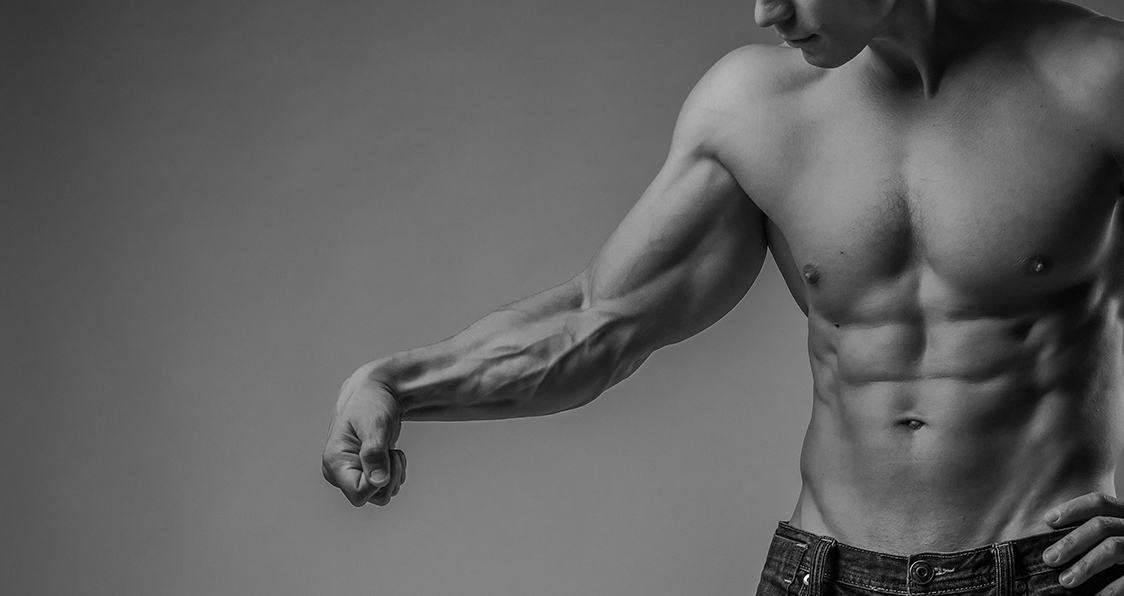
5 Exercises Required to Boost Bicep Growth
Best Exercises For Building Your Biceps
“I don’t like training my biceps,” said no one ever. For many gym bros, their self-esteem can be directly proportional to the size of their guns. Countless people around the world spend hours working on their arms but only a few of them have some well-chiseled guns.
If you’re determined to grow your pythons, choosing the right exercises is half the battle won. The exercises on the list are a mix of isolation and compound lifts so you can get the best of both worlds.
Barbell Curls
Barbell curls are a great compound (multi-joint) exercise which can help in developing muscle mass and strength. To make the most of this lift, use an Olympic barbell. Doing so will recruit your core stabilizers.
Using the Olympic barbell can result in adding inches to your biceps. Make sure you don’t use momentum by jerking or swinging back and forth to lift the bar. Keep your torso upright and your elbows pinned to your sides.
Hammers Curls
Hammer curls are an incredibly effective exercise in improving the length of your biceps. Performing the dumbbell hammer curls also recruits your forearms as you hold the dumbbells with a neutral (palms facing each other) grip.
You can target your biceps from different angles while performing the dumbbell hammer curls. Curling the dumbbells straight forward will target the medial biceps. You can work the outer bicep heads by curling the dumbbells in a crossbody motion and curling with your arm pointing outwards will hit your inner bicep heads.
Machine Preacher Curls
The machine preacher curls are a great isolation exercise as it’s a combination of the preacher bench and cables. If you want to work on your bicep peak, you can’t go wrong with the machine preacher curls.
Most people make the mistake of lifting heavier weights than they can handle in this exercise. Letting their egos get in the way gets the better of them and they leave gains on the table by not following a full range of motion.
21’s
21’s are one of the most underutilized bicep exercises. You haven’t experienced the nastiest bicep pump of your life until you’ve done the 21’s. 21’s can help add size and definition to your guns.
Stand with an upright torso with a barbell in hands extended at arm’s length. Hold the barbell with a shoulder-width grip. Start the lift by performing seven reps from the bottom to the middle of the movement (like half barbell curls). Without resting, lift the barbell so it is next to your shoulder (top of the barbell curl movement).
Perform the next seven reps from the top to the middle. After completing the second mini-set of seven reps, perform the last seven repetitions with a full range of motion. The three mini-sets of 7 reps form a single set, and you need to complete it without stopping for rest.
Overhead Cable Curls
If you’re like most people, you like to show off your pythons with the front double bicep pose. Performing the overhead cable curls will polish your guns by working on the peaks and developing definition and separation.
Stand in the center of a cable pulley machine while holding a D-handle attachment in each hand with a supinated (palms facing the roof) grip. At the starting position, your arms should be fully extended at your sides so your upper arms are parallel to the floor.
While keeping your upper arms stationary, curl the weights by flexing at your elbows. Hold and squeeze your biceps at the top of the movement. Return to the starting position and repeat for the recommended reps.
Which is your favorite bicep exercise? Let us know in the comments below. Also, be sure to follow Generation Iron on Facebook and Twitter.
*Header image courtesy of Envato Elements
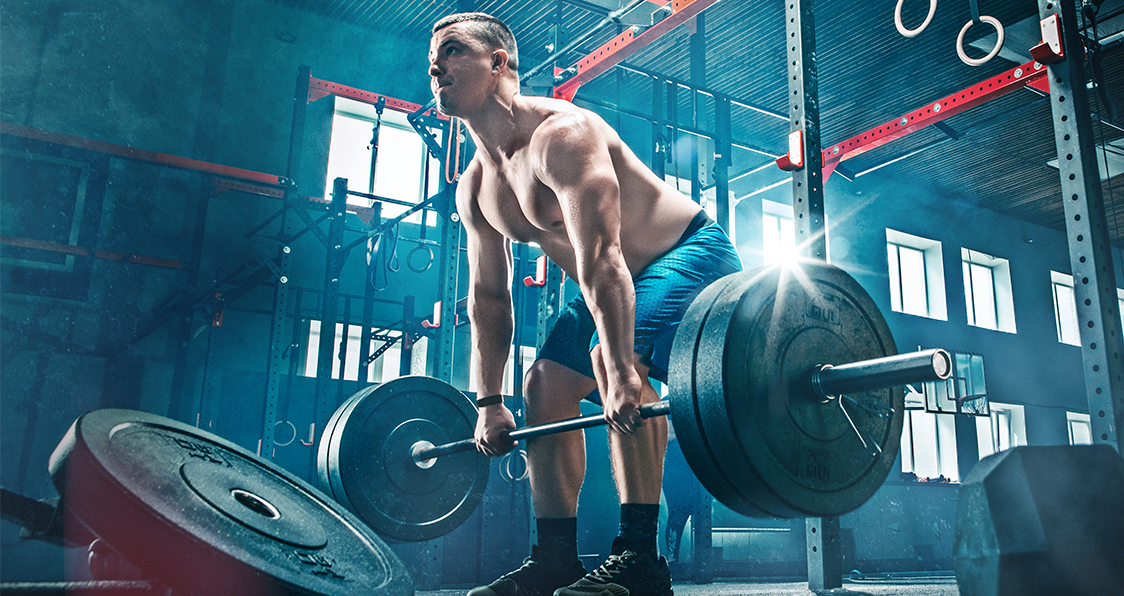
6 Ways To Ignite New Muscle Growth
Ignite New Muscle Growth With These Steps
Whether you’re a beginner or a professional, hitting a plateau is almost inevitable in your fitness journey. If you don’t know your way around the muscle building barriers, you might find yourself at a dead end.
You can break through the overhead ceiling by making a few adjustments and continue your progress. While following the steps mentioned in the article will get you through a plateau, you might reach the same standstill at some point in the future.
When you hit a progress roadblock again in the future, all you need to do is come back to this article and switch different things than what you did in the first time. Bookmark this page so you can come back whenever your progress halts.
Change Your Training Routine
If you’ve been following the same training program for over 12 weeks, it might be time to switch things up. Your workouts should have a combination and right mix of compound (multi-joint) and isolation (single joint) exercises so your muscles get the best of both worlds.
If you want to build muscles or lose body fat you might also need to adjust your cardio. To ensure the overall development of your muscles, you will have to train your muscles from all the angles with variations of exercises.
Fix Your Diet
Diet is an integral part of building muscle mass. If you’re unable to add size, you might have to adjust your macros by increasing your carbs and protein intake. To reduce your body fat, you might have to cut back on the carbs.
If the changes in your diet don’t seem to work, it might be a good idea to try a new diet like IIFYM (if it fits your macros), keto, Intermittent fasting, etc. If you’re not sure how to fix your diet, you should take the help of a professional.
Emphasize Recovery
Some people focus too much on their training and ignore recovery. Many of these people wear their low daily recovery time as a badge of honor. You need to understand that you break muscle while you train and build muscles while you’re resting.
Recovery from your workouts is vital to building muscle or losing weight. If you feel sore for more than two days after your workouts, you should consider taking two rest days in a week as compared to one.
Advanced Training Techniques
Your muscle tissues are quick at getting used to your training style. Don’t let them settle down by using advanced training techniques. Some of the most effective training techniques include BFR (blood flow restriction) training, supersets, drop-sets, intraset stretching.
You constantly need to shock your muscles if you don’t want to hit a muscle plateau. Some of the advanced training techniques might require you to buy additional equipment like occlusion straps, resistance bands, etc. but this investment will pay for itself in no time.
Use Supplements
Supplements are incredibly effective at helping in igniting new muscle growth. There are different types of supplements you can take to enhance your performance and recovery which lead to building muscle mass.
Pre-workout supplements can get you ready for your training, while intra and post workout supplements aid in muscle recovery and growth. Make sure you don’t overly rely on supplements and keep real food as your main source of nutrition.
Be Patient
Building muscle mass doesn’t happen overnight. It can take some time depending on your genetics before your body starts to show changes even after you’re following the right training, nutrition and recovery plan.
One more thing to note is, the more you have, the harder it will be to progress. The more muscle you have, the harder it will be to gain lean size. The lower the body fat percentage you have, the harder it’ll be to shed extra weight. As they say, patience is a virtue.
Which is your favorite muscle to train? Let us know in the comments below. Also, be sure to follow Generation Iron on Facebook and Twitter.
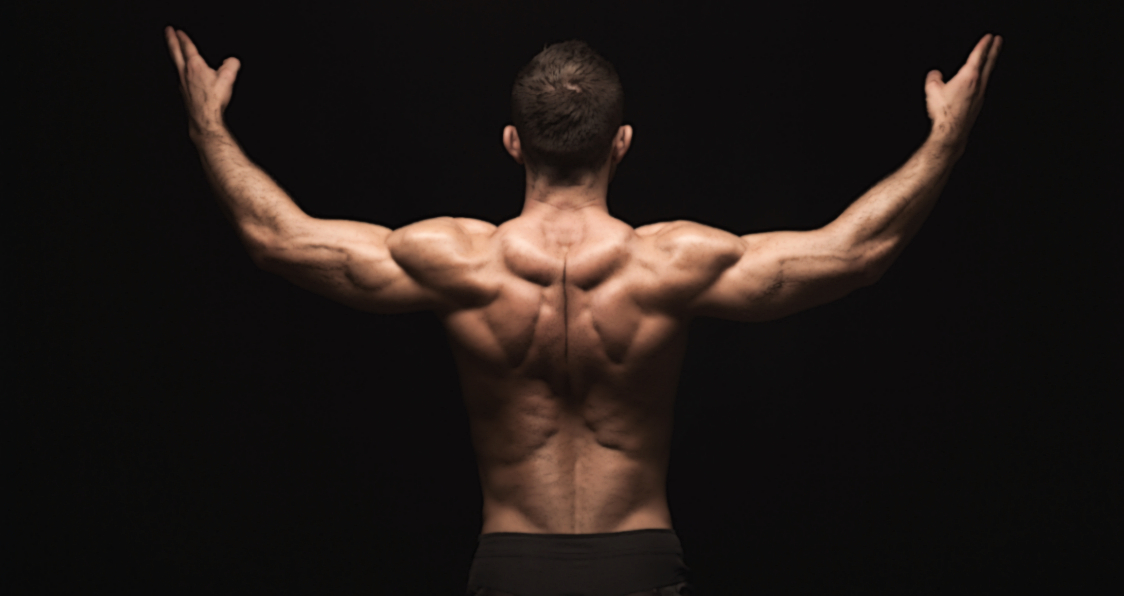
Master Bent Over Rows for Major Back Gains!
Developing A Strong And Healthy Back
For many, the muscles of the back are neglected and underused which can lead to problems with posture and consequent discomfort or pain (1). In the modern world, many work at a desk and remain seated for prolonged periods of time which can place the back under a great deal of stress and strain. Over time, the shoulders will begin to pull forward thus causing tightness and stiffness in the chest and neck muscles.
Even for those who attend the gym, the back often does not receive as much attention as is perhaps required, whereas the more visible muscles (such as the chest, shoulders and arms) are regularly targeted. This can lead to underdevelopment of the back and can exacerbate any existing back issues. Recent research has highlighted the importance of regular strength training for reducing back pain and preventing back problems (2).
Benefits Of The Barbell Bent Row
There are a number of useful back resistance exercises that can be performed with the barbell bent row being one of the most effective. While it is the latissimus dorsi (lats) which are primarily responsible for this exercise, there are a number of back and shoulder muscles which must engage in order to drive this movement – such as the trapezius, rhomboids, and rotator cuff muscles (3).
Considering the role that each of these muscles play in maintaining good posture, strengthening these muscles will have a substantial impact on posture and movement. Additionally, in the bent position, the core musculature must contract in order to hold the trunk of the body in the correct position (4). Strengthening the core will also contribute to better posture.
Finally, for those who enjoy pressing movements – such as the bench or overhead press – focusing on the bent row may facilitate a greater performance with these lifts while also helping to balance out the upper body muscles symmetrically – both in terms of size and strength. Conversely, having a muscular imbalance can potentially increase the chances of experiencing injury (5).
Barbell Bent Row Form
When performing the barbell bent over rows, it is important to put technique before ego. Loading the barbell with excessive weight is a sure way to compromise form. Instead, keep the weight manageable and focus on the movements required to bring the bar into the body. Controlled movements, which maximally engage the working muscle, are far superior to uncoordinated and wild movements.
To properly execute the barbell bent row, follow the 4 coaching points listed below…
1. Place the loaded barbell on the floor. Ensure that the feet are approximately hip width apart. Prior to picking the barbell up, push the chest high and pull the shoulder blades together. Hinge forward and grip the bar using an overhand grip, placing the hands roughly shoulder width apart. Keeping the core tight and back flat, pick the bar up and stand tall.
2. From here, focus on pushing the hips back so that the upper body tips forward while maintaining a flat back. Keep a very slight bend in the knees and keep the bar as close to the legs. The bar should be in a hanging position close to the knees.
3. Squeeze the core muscles tightly before driving the bar into the area between the chest and the stomach. As you pull, focus on keeping the shoulders down and the elbows as tight as possible to the ribcage. At the top portion of the rep, aim to squeeze the shoulder blades together.
4. Once contact has been made, reverse the movement and control the barbell back down to the original starting position. Remember to keep the core contracted as the bar moves to avoid moving out of neutral spinal alignment.
Barbell Bent Row Tips
When performing the row, instead of thinking about pulling the bar up to the chest, focus on pulling the elbows behind the body. This will do two things – firstly, it will help to activate the right muscles, specifically the lats, and secondly it will facilitate a better rowing motion.
Another practical tip for the bent row is to pause briefly at the top of the movement and focus on maximally squeezing the shoulder blades together. Once again, this will lead to a greater activation of back and shoulder musculature and have a profound effect on posture and overall back health.
Barbell Bent Row Variations:
Underhand Grip Barbell Bent Row
The only difference between this variation and the conventional bent row is the grip on the bar. Instead of an overhand grip, this variation uses an underhand (supinated) grip. This places more stress on the lats and lower traps.
Pendlay Row
The Pendlay row involves rowing the bar off the floor instead of from a static hanging position – other than this, the form is identical. To get into the position for this row, the trunk must assume a more parallel position and therefore requires a great degree of hamstring flexibility. As a result, many may find getting into this position, all while maintaining a flat back, quite challenging.
Yates Row
For the Yates row, a more upright stance must be assumed so that the trunk is approximately angled 30-40° from the floor. As a result of this position, the bar will travel to the lower abdominals instead of the sternum when rowed. Once again, this will predominantly target the lats and also the mid to low traps.
One Arm Barbell Row
For the unilateral barbell variation, stand side on to the barbell and use a neutral grip (palm facing the body). Look to pick up the bar near the plates, assume the conventional rowing position and complete full repetitions.
Dumbbell Bent Over Rows
The dumbbell variation of this exercise is a superb way of balancing out the strength of both sides. With a barbell row, the stronger side can begin to dictate the movement, whereas with the dumbbells, both sides must work individually to drive the weight upward. A secondary benefit is that dumbbells also require a greater amount of control and stability which places a large demand on the core muscles (6).
One Arm Dumbbell Row
A simple variation on the dumbbell row is a single sided row. For this variation, place the left hand and knee on a bench for stability and row from the right side, ensuring to maintain control and squeezing the muscles around the shoulder blade. Once a number of reps have been completed, swap sides and repeat.
Dumbbell Incline Row
For those who find it difficult to maintain a flat back during the row, use an incline bench, lie directly on top of it and let the dumbbells hang. From that position, row as normal ensuring that the chest stays in contact with the bench at all times.
Bent Over Flyes
For the final variation, assume the rowing position while holding two dumbbells. However, instead of rowing, keep the arms straight and drive the dumbbells out to the side of the body while focussing on pulling the shoulder blades together.
Final Word
The need to perform back strengthening exercises is very great for so many as it can effectively prevent dysfunction, pain and injury. There is no doubt that the bent row is one of the best exercises that can be performed for building back strength and maintaining overall health.
For more news and updates, follow Generation Iron on Facebook, Twitter, and Instagram.
References:
1-Services, Department of Health & Human. “Posture”. www.betterhealth.vic.gov.au.
2-Westcott, Wayne L. (2012-7). “Resistance training is medicine: effects of strength training on health”. Current Sports Medicine Reports. 11 (4): 209–216. doi:10.1249/JSR.0b013e31825dabb8. ISSN 1537-8918. PMID 22777332.
3-Edelburg, Holly (September 29, 2017). Electromyographic analysis of the back muscles during various back exercises
4-Fenwick, Chad M. J.; Brown, Stephen H. M.; McGill, Stuart M. (2009-3). “Comparison of different rowing exercises: trunk muscle activation and lumbar spine motion, load, and stiffness”. Journal of Strength and Conditioning Research. 23 (2): 350–358. doi:10.1519/JSC.0b013e3181942019. ISSN 1533-4287. PMID 19197209.
5-Knapik, J. J.; Bauman, C. L.; Jones, B. H.; Harris, J. M.; Vaughan, L. (1991-1). “Preseason strength and flexibility imbalances associated with athletic injuries in female collegiate athletes”. The American Journal of Sports Medicine. 19 (1): 76–81. doi:10.1177/036354659101900113. ISSN 0363-5465. PMID 2008935.
6-Saeterbakken, A.; Andersen, V.; Brudeseth, A.; Lund, H.; Fimland, M. S. (2015-11). “The Effect of Performing Bi- and Unilateral Row Exercises on Core Muscle Activation”. International Journal of Sports Medicine. 36 (11): 900–905. doi:10.1055/s-0034-1398646. ISSN 1439-3964. PMID 26134664.
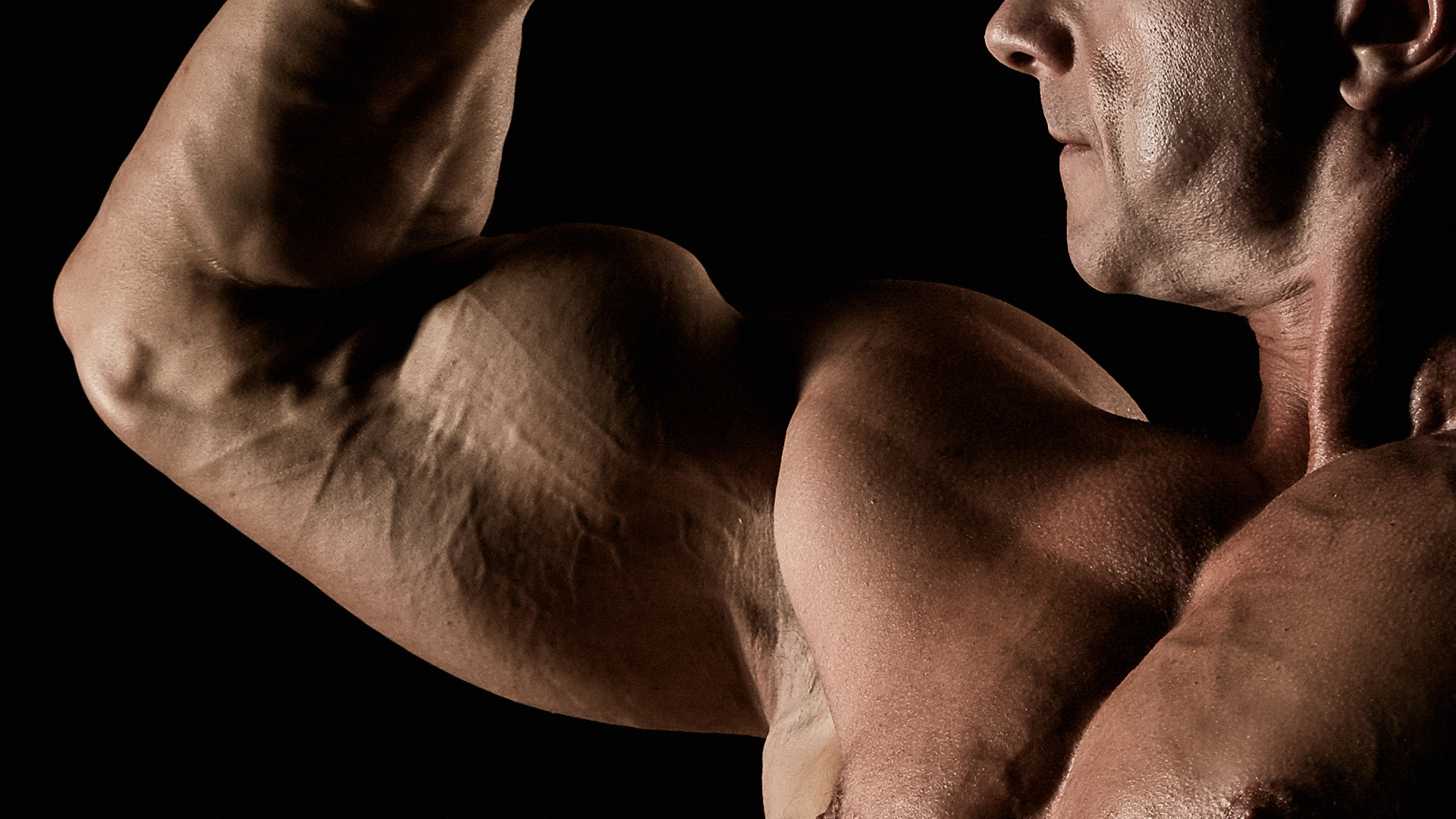
4 Bicep Curl Variations For A Serious Pump
Blast your biceps with these awesome curl variations.
Ask most guys who are serious about their fitness goals. When they think about being in great shape – more than likely the image they have in their heads is of a ripped and striated upper body. It’s what gives a bodybuilder that superhero appearance that so many bodybuilders covet. The building up of the chest, back, and abs are all integral to the process of having a well formed upper body. But the whole picture wouldn’t be complete with some well defined arms.
No matter what stage of the game you’re in there’s no way that an avid bodybuilder wouldn’t want some mountainous biceps to bring together their over all look. If you’re looking to make some major headway in building up your arms then check out these awesome variations for your biceps.
Incline Dumbbell Curl
This exercise is a great variation on your usual bicep curl. By using a seated bench and inclining the seat to just above the 45 degree angle you’ll ensure that you’ll give your arm full range of motion. While performing these be sure to twist your wrist as you get to the top of the curl and within a few reps you’ll be guaranteed to get a great pump. But remember, this exercise is all about form and if your technique sucks then you can forget about reaping the benefits of this great exercise.
21s
This variation is a high rep alternative that is sure to get your biceps burning. The exercise requires a manageable amount of weight in order to complete the 21 reps in one set. Too heavy and you won’t make it through the exercise. Too light and you won’t even feel anything. The first variation starts with your arms fully extended with a barbell or EZ bar in your grips. Curl the bar right up to your stomach then lower it slowly for 7 reps. Then bring the bar up to chest level and curl up to your chin for 7. Lastly, start from the bottom and curl up to your chin for full range of motions for the remaining 7 reps.
Spider Curl
For this variation you’ll need to have a preacher bench to perform the action. Where you would normally be in a seated position at the preacher bench, this exercise requires you to be standing when performing the motion. With the preacher pads right under your arm pits, grab a EZ bar, adjust to a narrow grip and perform the curl. This exercise is great for building up the short head muscles of the biceps and can add some great definition.
Standing Cable Curl
This exercise is a great finisher for your workout. The cable curl can be performed like the standard barbell or dumbbell curl, but it does allow for some variations that can be great for stimulating both the long and short head muscles of the biceps. You can move the shoulders forward to attack the short head muscles or lean backwards to work the long head muscles. You can choose to do a standard 10-12 reps with the movement or work to failure to really thrash the muscles.
What do you think about these bicep variations? Let us know in the comments below and be sure to follow Generation Iron Facebook and Twitter.
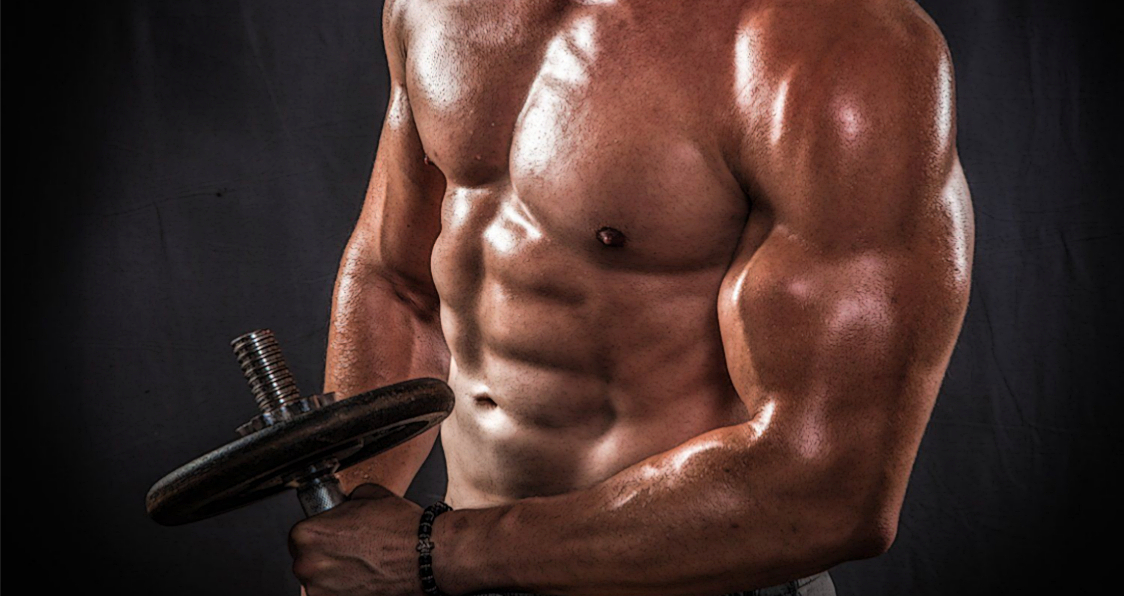
Want Major Muscle Development? Lift Fast!
Put some more speed into your lifts.
We’re always trying to find new ways to build muscle. It’s the number one reason that we hit the gym in the first place. Switching up your routine every now and then can really help your muscle building endeavors in more ways than one. Firstly, it will keep you from getting bored with your routine.
Training can become so mundane that following the same program week in and week out can prove pretty tedious on the road to gains. But most of all, it helps to avoid hitting the much feared plateau, giving you the opportunity to make your workout more challenging. Lifting speed is one method that has been proven to help and can make a big difference in your training.
When most people talk about muscle building, they’ll tell you that the key to making some major gains is to perform your lifts slowly so you can give your muscles a steady burn. While that is true, it’s not the only method that can be used to stimulate muscle growth. There have been studies that suggest lifting at faster speed can prove to give you even more gains than lifting slow. But how exactly can you benefit but performing your lifts faster? Let’s take a look.
Develop Strength (Movement Feels Lighter, You Can Use More Weight)
Lifting fast can be great for building your strength. While lifting moderate weight and lifting faster you’ll notice that the task of lifting the weight becomes easier. This is because of the momentum utilized by trying to lift faster. That same momentum, some will call cheating, will help you to lift heavier weight which in turn translate to more muscle and more strength to perform the movement. Do it enough times and eventually you’ll notice some improvements in your one rep max.
Develop Power (The Ability to Accelerate is Needed in All Sports)
Often confused with strength, the development of power has to do with two things. Power is a combination of strength and speed that allows for explosive movements. By lifting faster you improve your ability to explode into your lift. Your core strength will improve and it will translate into strength gain as well. Strength and power work in tandem together, the muscle strength and endurance allows you to last while the power allows you to push weight with more ease.
Work More Muscle Fibers (If You’re After Muscle Development: Lift Fast!)
This is perhaps the number one reason why you should be lifting fast. Faster movements activate more muscle fibers which in turn translates to greater gains. The explosive power and muscle strength from lifting work together to utilize an increased number of muscle fibers due to multiple muscle groups having to work together all at once.
Putting it simply, the explosive movement of lifting faster will help develop you fast twitch muscles which translate to a greater development of the entire muscle group that is being attacked. That means greater gains and greater muscle development.
What’s your views on fast lifting? Let us know in the comments below and be sure to follow Generation Iron on Facebook and Twitter.
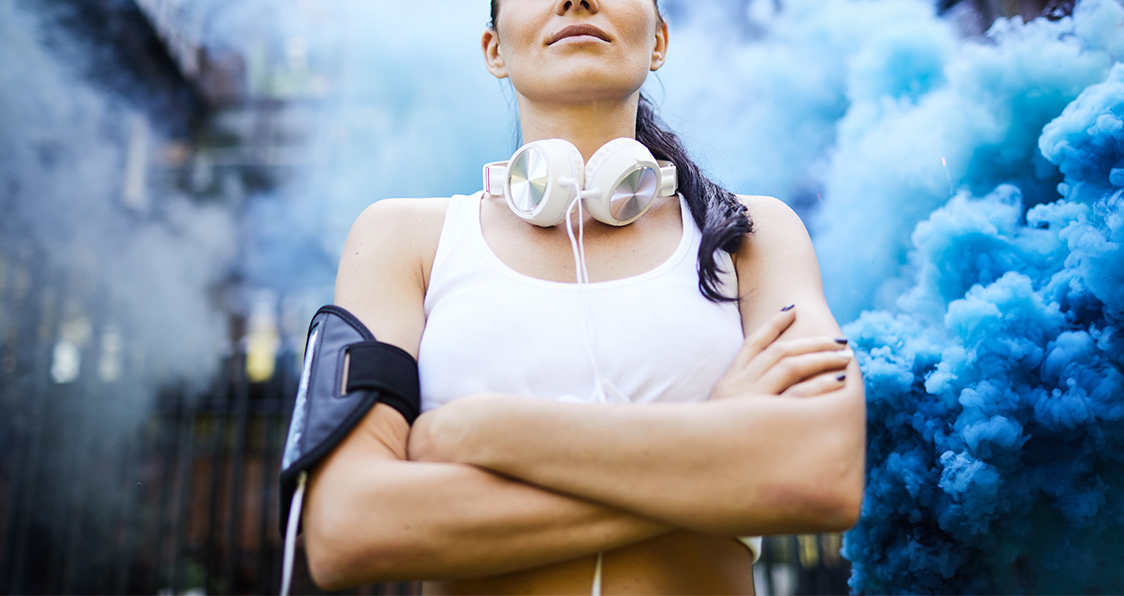
10 Ways To Boost Motivation For Your Workouts
How To Boost Your Motivation For Training
Following a fit lifestyle is not easy. Transforming your physique requires you to follow a strict training, diet, and recovery program. Faulting on a single parameter can set you back on your progress.
You need to be perpetually motivated to transform your body and let’s accept the fact that it can be hard. There will be days when you won’t feel like hitting the gym or eating the same meal for the fifth day in a row. We have put together this article to help you get through it.
Start with the Why
Most people lose motivation because they don’t have a solid reason to stick to working out. If you have body-insecurities or are dealing with inferiority complexes, you need to remember it every time you hit the gym.
Quick Fixes
Watching a motivation video or listening to a podcast can be incredibly effective in pumping you up for your workout. There are tonnes of 2-3 minute podcasts and videos on YouTube that can do the job.
Have a Plan
Waking up without a plan can make you feel lethargic. You can maintain and build on your motivation if you sketch a roadmap with a detailed plan of what you’ll do on a given day. Having a To-Do list will eliminate the laziness and give you solid action steps.
Set an Alarm
Many people skip their training sessions because they get busy binge-watching their favorite Netflix series. Setting an alarm to get ready for the gym can be the nudge that can make all the difference.
Polish Your Strengths
Sometimes people can lose the motivation to train when they don’t see the desired progress. Rather than skipping training a weak muscle group, you should hit your stronger muscles.
Prepare For War
For some people hitting the gym becomes a chore. Have you ever seen someone getting psyched for doing their chores? You need to change this psychology. You should prepare for a workout as a soldier prepares for war.
Repeat a Mantra
Quotes and mantras can help you feel powerful and ready to kill a workout. Grab a screenshot of a quote you see on social media that hits home or repeat a favorite quote before you head out for a training session.
Be Accountable
Since bodybuilding is not a team sport, it’s very easy for people to drop out without drawing a lot of attention. If you’re serious about your transformation, you should share your goals, aspirations, and deadlines with someone and be accountable to them.
Switch It Up
If you are like most people, you’re likely to hit a plateau sooner or later. When it feels as though progress has stalled or isn’t going great, finding success in other areas can give you a unique challenge to motivate your workout.
Create a Playlist
Several studies have shown that listening to music can improve the quality of your workouts. Make a playlist of your favorite tracks that get you going for your workouts. Music services like Spotify and Apple Music have dedicated workout playlists.
How do you pump yourself up for your workouts? Let us know in the comments below. Also, be sure to follow Generation Iron on Facebook and Twitter.
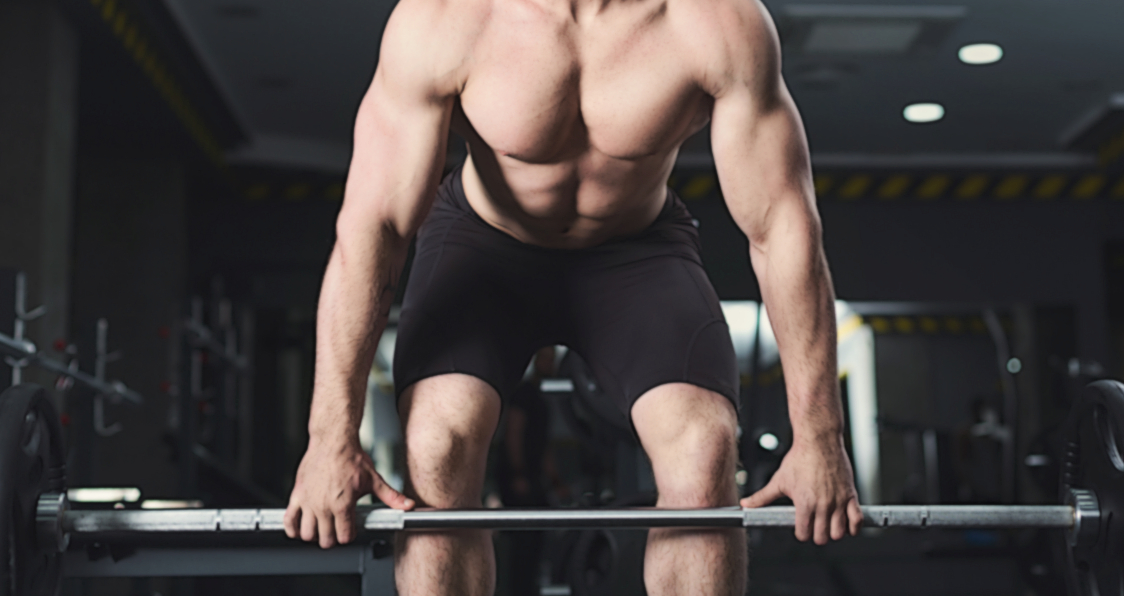
The Romanian Deadlift: Muscles Involved, Benefits, Variations, Tips, and Exercise Steps
These tips and insights will make you a Romanian Deadlift master!
The Romanian deadlift (RDL) is at first glance just a conventional deadlift with a few small differences. Well, it is but these minor changes are significant enough that the exercise is more popular than ever.
But, it’s also effective for building a phenomenal physique and lots of full-body strength too…
Now, the Romanian deadlift is a functional movement which will carry over to athletic performance as well, so the benefits reach far beyond just aesthetics and power. But being a perfect posterior chain exercise, the RDL is a do-it-all movement.
So, we want you to get the best out of your workouts and that means familiarizing yourself with the Romanian Deadlift so that you can maximize your results.
Here’s some great important information about the Romanian Deadlift that we think you can benefit from. But first, we’ll start with how the RDL got its actual name…
RDL Origin
The Romanian deadlift admittedly has a name that creates a sense of curiosity about its origins. So, to answer the question… the RDL was named after a very accomplished Romanian weightlifter named Nicolae “Nicu” Vlad.
Apparently, a few American weightlifters spotted Vlad doing his version of the “deadlift” and named the lift after him since he was from Romania.
But, the RDL is technically not a deadlift since it not lifted off the ground, which makes the name a bit confusing.
Muscles Involved
Like previously mentioned, the RDL works the entire posterior chain (Backside of the body) of muscles. But there are also muscles which receive a lot of stimulation due to their assistance in the exercise.
A study showed hamstring activity to be very high during the RDL and this is a main target muscle. (1)
But, overall the rear muscles are worked pretty equally.
The muscles involved include:
Back (Rhomboids, Latissimus Dorsi, Trapezius and Erector Spinae)
Legs (Quadriceps, Hamstrings, and calves)
Gluteus Maximus
Core (Abdominals, Obliques)
Hip flexors
Biceps
Forearms
Benefits
There are numerous benefits to doing the Romanian deadlift.
From muscle and strength building to functionality and overall performance… the RDL is an excellent movement.
If you play sports, you need a strong posterior chain plus hip extension/flexion for pretty much all athletic movements (Jumping, running, bending, etc). But, fitness competitors and even people rehabbing from injury can benefit from the RDL. (2)
Now, another benefit is that you can learn hip flexion and extension independent of spine flexion. (3)
Variations
The beauty of weight training is that there is something for everyone. Some people may not have the mobility to train with barbells and so dumbbells can offer a great alternative. But, the Smith machine and even a trap bar can be very beneficial as an effective training method.
Here are the popular variations:
Dumbbell Romanian deadlift
Single-leg Romanian deadlift
Smith machine Romanian Deadlift
Trap bar Romanian deadlift
All of these variations have their own unique benefits.
Dumbbells – The dumbbell deadlift is a very effective variation for the RDL because it develops balance, stabilization, a freer range of motion, and motor control. (4)
Single-leg deadlift – This variation is ideal for unilateral (Affecting one side) development and being able to isolate each muscle is great for several reasons… (5)
Unilateral benefits:
Correct muscle imbalances
Increase core strength
Improve Balance
Rehabilitation
Smith machine deadlift – This variation is great for people who don’t quite have good balance or who prefer to only have to focus on moving the weight. There’s not much stabilization required and you can safely use heavy weights too.
Trap bar deadlift – The trap bar deadlift is very beneficial because it lessens the stress on your spine by allowing you to pull closer to your center of gravity and allows you to move through a more natural range of movement. (6, 7)
But, the grip placement is also different since it’s more like when training with dumbbells.
Training Tips
Since the Romanian deadlift varies in certain aspects from the conventional deadlift, it’s important to know how to execute the movement.
So, here are some tips for your training days to ensure you get the results you’re looking for…
Form
Keep your knees slightly bent during the exercise and your back should be straight while slightly arched. Then, keep your shoulders back and down.
You want to keep the weight as close to your body as possible and positioning yourself correctly will ensure this.
The movement
You can start the RDL with the bar on the ground or on a power rack. But make sure the bar is set high on the rack so you can start closer to the top of the movement.
Now, the deadlift isn’t technically a “deadlift,” which implies you’re pulling the bar from off of the ground. And the movement involves no contact with the ground except for the initial lift-off.
On the concentric (Positive) phase of the movement, you want to push upward through your heels and midfoot. But then you want to thrust your hips forward halfway through the movement to complete the lift in an erect position.
The hips are doing a lot in the RDL and even more so than with conventional DL where the quads are more heavily involved.
Range of motion
This is where the Romanian deadlift really differs from the Standard deadlift.
Instead of lowering the bar all the way down until it touches the floor, you’ll lower the bar to about mid-calf level with the RDL. This keeps constant tension on the posterior chain of muscles (Especially the hamstrings and glutes).
Then, you’ll come all of the way up until you’re erect as you would with a standard deadlift.
Sets/Reps
The Romanian deadlift is not much different than a conventional deadlift training structure. However, the RDL is not quite as taxing on the body, and therefore you can generally do a little more.
And of course, sets/reps schemes vary based on training experience. But, warming up and doing a pyramid up in weight is recommended to get the joints and nervous system conditioned for more intense sets with heavier weights.
Beginner – If you’re a beginner, it’s best to do about 3 sets with good form and light to moderate weight. This will help you stay injury-free and develop the best form possible. Reps should stay at around 10-15 until more advanced.
Intermediate – If you’re an intermediate lifter, go with 3-4 sets and train with more moderate to moderate/heavy resistance loads.
Intermediate lifters can train heavier and with lower rep ranges of 8-10 but it’s best to mix it up sometimes with higher reps.
Advanced – If you’re more advanced, then you likely know your body by now and can get away with more sets and more volume. So, 4 sets with heavier resistance loads should be completely appropriate for sufficient stimulus.
Advanced lifters have an advantage when it comes to training because they know their bodies very well. So, anywhere from 6 reps and up is perfectly fine, in combination in varying rep ranges.
Exercise Steps
If you want to experience all that the Romanian deadlift has to offer, then you’re going to need to know how to do it effectively.
It’s not like a regular deadlift regarding the focus of the movement and like mentioned before, the differences are notable.
So, here’s a quick step by step guide…
Start with the barbell on the floor or elevated on a power rack. If on a rack, start in a higher position at about mid-thigh level or even slightly higher.
Grip the bar at a shoulder-width or slightly wider position.
Arch your back and slightly bend your knees.
If starting from the floor, stick your butt out and keep your upper legs slightly above parallel to the floor. Now, push through your heels and midfoot while extending the hips until you’re standing straight.
If starting from the rack, bend your knees slightly and extend your hips upward to lift the weight off the bars until you’re standing straight.
Slowly lower the bar to mid-calf level by focusing on hip flexion while keeping your back arched.
Extend through your hips while keeping the pressure of the weight in your heels until you’re standing straight. Your shoulders should be down and back.
Then, you can repeat this movement as desired for repetitions.
Sample Workout Routine:
Warm up with 2 sets of progressive RDL’s at about 30 and 60% of your one-rep max before doing your working sets.
Romanian deadlift
3 sets x 10-12 reps
(Rest 60 seconds in between sets)
Lying hamstring curls
2 x 10-12
(Rest 30-45 seconds in between sets)
Alternating lunges
3 sets x 10-12 reps
(Rest 45 seconds in between sets)
Leg press calf raises
3 sets x 15 reps
(Rest 30 seconds in between sets)
Wrapping Up
The Romanian deadlift is a must for overall posterior chain development. It’s also an excellent variation and/or alternative to the conventional deadlift depending on your training goals.
But, it’s important to learn and develop proper technique while implementing progressive resistance to experience maximum results.
Now, since there are several variations, feel free to experiment to find what works best for you. There’s no one best method of training when doing the Romanian deadlift as long as the movement stays the same.
…We hoped you enjoyed this useful information about the much popular Romanian Deadlift and now you have everything you need to make some serious gains!
For more news and updates, follow Generation Iron on Facebook, Twitter, and Instagram.
References:
1– McAllister, Matt J.; Hammond, Kelley G.; Schilling, Brian K.; Ferreria, Lucas C.; Reed, Jacob P.; Weiss, Lawrence W. (2014-6). Muscle activation during various hamstring exercises. Journal of Strength and Conditioning Research. 28 (6): 1573–1580. doi:10.1519/JSC.0000000000000302. ISSN 1533-4287. PMID 24149748.
2– Deane, Russell S.; Chow, John W.; Tillman, Mark D.; Fournier, Kim A. (2005-8). Effects of hip flexor training on sprint, shuttle run, and vertical jump performance. Journal of Strength and Conditioning Research. 19 (3): 615–621. doi:10.1519/14974.1. ISSN 1064-8011. PMID 16095411
3–ACE – ProSource™: January 2016 – ACE Technique Series: Romanian Deadlift.
4–Free weights or machines? Choose what’s right for you
5–The Benefits of Unilateral Training
6–UCSB Science Line. scienceline.ucsb.edu.
7–Biomechanics of Safe Lifting. ergo.human.cornell.edu.
Header image courtesy of Envato Elements
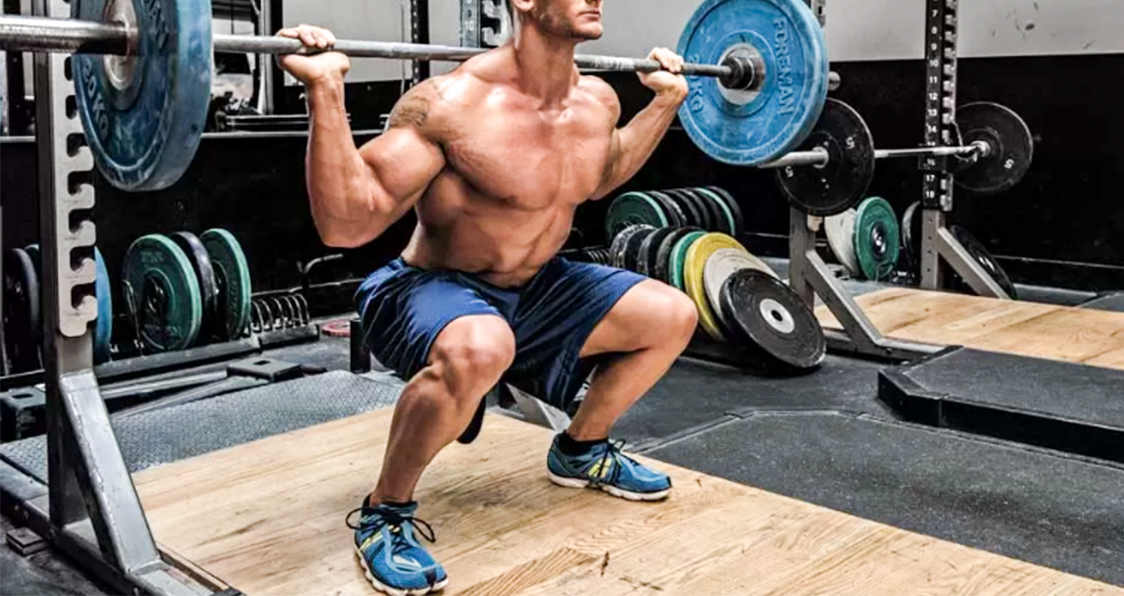
This Is How Deep You Should Squat
Which one gives you more gains? The Deep squat or regular parallel squat?
When it comes to leg training there seems to be a constant emphasis on knee pain and protecting the joint from damage. And why the hell not? The knees are perhaps the most important body parts to maintain for any athlete, serious or otherwise. Knee health is paramount for peak performance.
Speaking of which, if you want to wreck shit in the gym and have monster wheels – then what’s the one workout you’d look to? If you said anything but the squat, you deserve a punch right in the jaw. The squat is the number one workout for a reason and it has been said before. But there’s another underlying debate that many squat experts wonder about. Which is better, deep squatting or regular squats?
Deep Squats Vs Standard Squats
If you ask most people about squats and knee health they’d tell you that performing the movement too deep will damage the front knee joint, but it seems like that’s a misconceived notion. Studies have proven that a deeper squat will prove to provide stronger glutes, hamstrings, calves, and quads.
But that’s not all. It seems like deep squats also provide increased knee stability. The two major ligaments in the knee, the ACL and PCL, are less strained the more the knees are bent. What’s that mean for the deep squat? It seems that the deeper the squat the less pressure is put on the knees and ligaments.
So does that mean you shouldn’t bother with the regular parallel squat? Not at all. If you’re someone with chronic knee pain then it would probably be beneficial to stick to the parallel squat. Despite the fact that deep squats may prove beneficial to your knee health in the long run, it can be risky if you’re not used to performing the action.
Parallel squats are still great for your legs and knees when performed correctly, so truly you can’t go wrong. By having form and control while performing either squat, you’re sure to see some awesome results.
No matter which squat you prefer it’s always best to keep the basics in mind. If you want to come out the other end with some strong and well defined legs then you better focus on form. Squatting uses multiple muscle groups, not only in your legs but your core, back, and shoulders as well.
If you want to jump into deep squats, then avoid the heavy weight in the beginning until your form is sufficient. Once that’s out of the way then pack on the weight and watch your legs grow. And of course, don’t ignore knee pain – once you feel something isn’t right, stop putting pressure on that knee and go get it checked out.
So which type of squats do you use to get your wheels in fighting form? Let us know in the comments below and be sure to follow us on Facebook and Twitter.
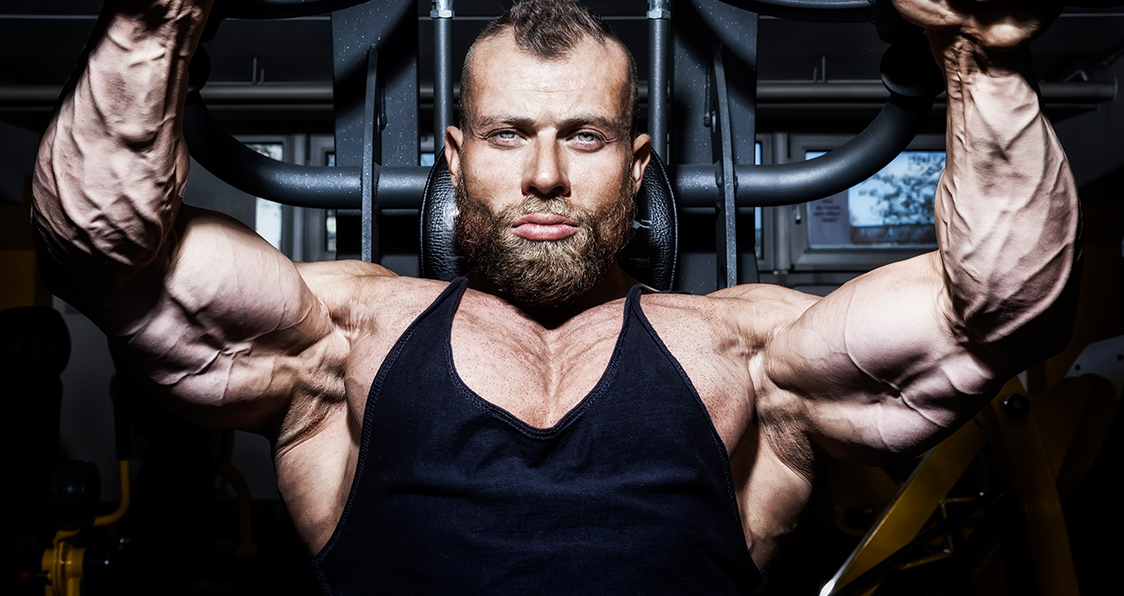
Build a Chest of Steel With This Workout
Workout For a Bigger and Striated Chest
If you’re planning to make a statement with your physique, moobs surely aren’t going to help your case. Having a broad chest can make you stand apart from the crowd and get the attention you deserve.
Building a ripped chest takes more than doing a few pushups and presses. You need to have a combination of compound and isolation exercises in your workouts to develop the perfect size and conditioning.
Cable Crossovers – 4 Sets 15 Reps
You’ll be starting this workout with an isolation exercise to pre-exhaust your pecs before you get into the compound lifts. Exhausting your chest at the beginning of the workout eliminates the need for lifting super heavyweights to recruits and target your pectoral muscles later in the workout.
Grab a D-handle attachment in each hand and take a long stride with either of your feet to get in position for the exercise. Make sure there is tension on your pecs at the starting position. Maintain a slight bend in your elbows while performing the cable crossovers to target your pecs efficiently.
Barbell Bench Press – 4 Sets 15 Reps
The barbell bench press is what squats are for the legs. If you’re new to resistance training or are using a challenging weight, it’s wise to get the help of a spotter. The barbell bench press is a great exercise to build strength and volume in your pectoral muscles.
While performing the bench press, keep your elbows slightly angled towards your sides to eliminate any tension on your rotator cuffs. Contract your pecs with every repetition while performing the exercises in the workout.
Incline Dumbbell Flyes – 3 Sets 15-12-10 Reps
For the majority of people, the upper chest is a weak muscle group. It’s harder to establish a mind-muscle connection with the upper pecs as it’s a very small (one-third of your chest) muscle group.
The key while performing the incline bench dumbbell flyes is to contract your pecs at the top of the movement and target the inner chest. Maintain a slight bend in your elbows and push your chest out as you reach the bottom of the movement.
Decline Dumbbell Press – 3 Sets 15-12-10 Reps
The decline dumbbell press is an incredibly effective exercise in building the separation between your chest and the abdomen. You’ll be able to lift relatively heavier weights in the decline presses as compared to the flat and incline presses.
The dumbbells should be at the sides of your chest at the bottom of the movement. Pause and contracts the life out of your pecs at the top of the movement. While the pressing movements help in developing the size in your chest, the flyes target the separation and conditioning.
Barbell Rollout Flyes – 3 Sets 10 Reps
The barbell rollout flyes are the ultimate chest workout finisher. If you’re lacking the separation between your pecs, the barbell rollout flyes should be a part of your exercise arsenal.
Place a weight plate at each end of a barbell and place the barbells parallel to each other on the floor. Get into a push-up position in the center of the two barbells and grab the barbells with a neutral (palms facing each other) grip.
Your arms should be extended in a straight line and the barbell should be under your shoulders at the starting position. Slowly push the barbell away while mimicking the dumbbell fly movement.
Your chest should be a 5-6 inches away from the floor at the bottom of the movement. Return to the starting position and squeeze your pecs. Repeat for the recommended repetitions.
Which is your favorite chest exercise? Let us know in the comments below. Also, be sure to follow Generation Iron on Facebook and Twitter.
Header image courtesy of Envato Elements
